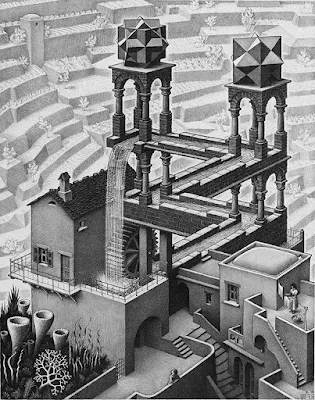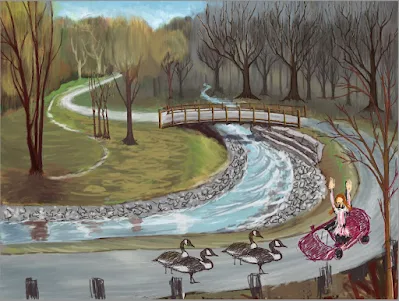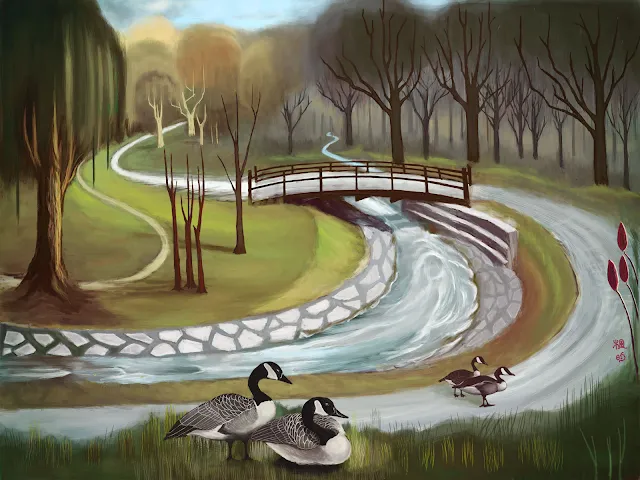Piet Mondrian's artworks have a very distinctive pictorial language.
His works can be recognized immediately: rectangle shapes, thick vertical and horizontal lines, primary colors (red, yellow, blue), and achromatic black, gray, white.
 |
Composition with large red plane, yellow, black, grey and blue,
Piet Mondrian, 1921, oil on canvas |
Because of the uniqueness of his work, Mondrian has a huge impact on designers. We can find Mondrian's color blocks not only in architectures, but also furniture and fashions, even foods. Just check out pastry chef Caitlin Freeman's Mondrian cake.
At first glance, Mondrian's most famous artworks look simple. But if consider the relationship of his shapes, lines, colors, that's actually quite complicated. A typical Mondrian painting would look both dynamic and harmonious at the same time. Mondrian obviously pursuits an asymmetrical balance. He once said: "Plastic art affirms that equilibrium can only be established through the balance of unequal but equivalent oppositions."
As we learn from art history, Mondrian's art style evolved step by step, from realistic to abstract, from complex to simple. Mondrian once said: "Pure abstract art becomes completely emancipated, free of naturalistic appearances."
 |
| Avond (Evening): The red tree, 1910 |
 |
| Gray Tree, 1911 |
 |
| Composition No. 10: Pier and Ocean, 1915 |
Mondrian's works were not just abstract, but formed a set of pictorial language, followed a very strict grammar. For example, he would only use straight lines at right angle, no circle, no curve, no diagonal lines.
Mondrian's partner, De Stijil movement cofounder Theo van Doesburg started to use diagonal in his work in 1923, and it turned out this was a huge difference in artistic believes between these two, so much so that the two finally parted their ways. Mondrian maintained his art practices in Neo-Platicism while van Doesburg went on establishing a new art movement called Elementarism.
For Mondrian, the pictorial language of his Neo-Platicism has philosophical foundation and spiritual implication. He said: "All relations are dominated by a single primordial relations, which is defined by the opposition of the two extremes."
He also said: "Vertical and horizontal lines are the expression of two opposing forces ... They exist everywhere and dominate everything; their reciprocal action constitutes 'life'."
References:
- Dr. Stephanie Chadwick, "Mondrian, Composition with Red, Blue, and Yellow," in Smarthistory, April 27, 2016, accessed June 19, 2023, https://smarthistory.org/mondrian-composition-ii-in-red-blue-and-yellow/.
- The Art Story: Neo-Plasticism
- The Art Story: Piet Mondrian






















